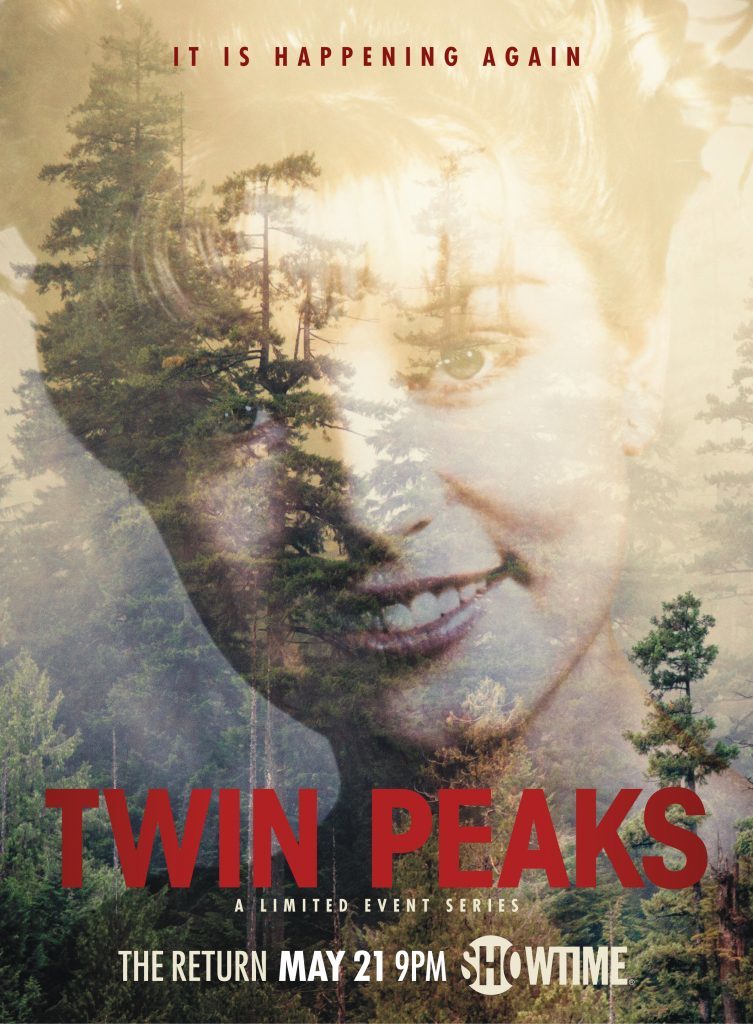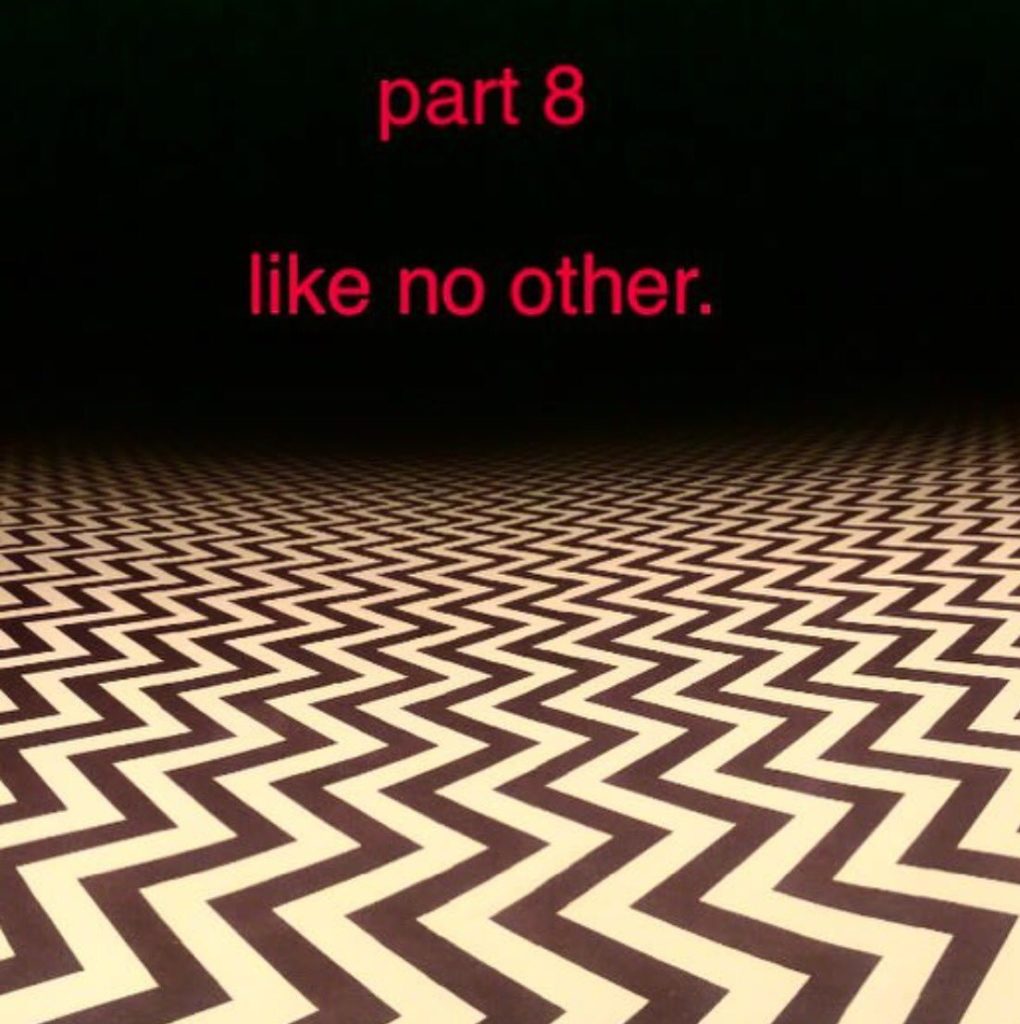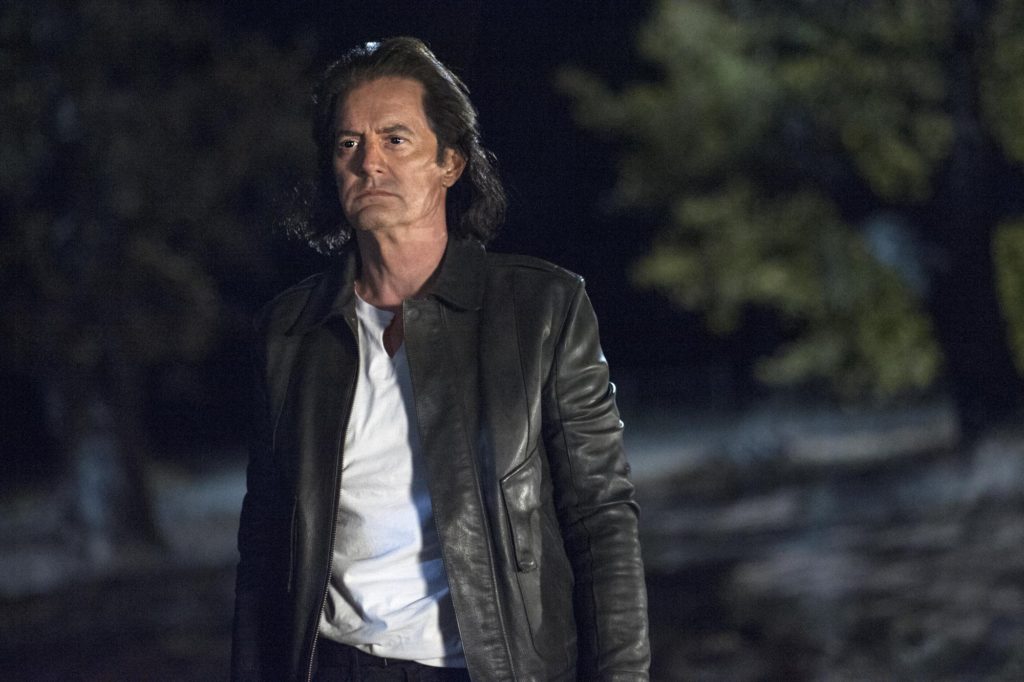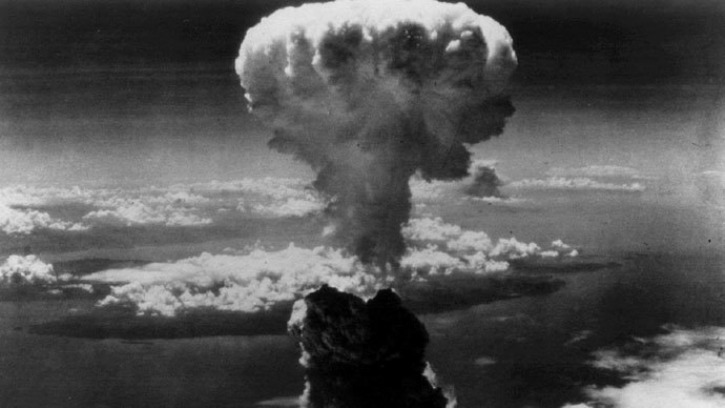
Oh, fuck me — I wouldn’t want to be the first person to “go live” with their review of Part Eight of David Lynch and Mark Frost’s Twin Peaks 2017/Twin Peaks: The Return/Twin Peaks Season Three. I couldn’t handle the responsibility.
Here’s what we know for sure — about eight hours ago, Peter Deming, who oughtta know because he shot the thing, tweeted this:

Fans promptly went into frenzied speculative overdrive, because that’s what fans do: Was this the night the “real” Agent Cooper would return? Would Michael Ontkean be putting in his long-rumored cameo? Would we finally learn what “Blue Rose” meant for certain? Was somebody gonna — gasp! — die?
What it’s safe to say no one expected was an epi — sorry, a part — so visually, thematically, indeed constitutionally flabbergasting and surreal that it makes part three look like child’s play in hindsight. Like most, if not all, of you reading this, I just got done watching the most flat-out amazing hour of television I’ve ever seen in my life, and I’m not really quite sure how the hell to describe it. Still, if you wanna make a go of it as a critic — even if only of the armchair/internet variety — you’d better not be the type of person who’s at a loss for words too often, so let’s just dive in and see where it goes.

Everything starts innocently enough (at least by Twin Peaks standards) with special agent Dale Cooper’s evil doppleganger (Kyle MacLachlan’s only got the one role tonight) making his prison “break” in a car driven by his sleazebag accomplice, Ray Monroe (George Griffith). Nobody films desolate open roads like Lynch, and this opening scene has a very LOST HIGHWAY feel to it, until Evil Coop decides he’s going to get one up on Ray only to find that Ray has double-crossed him first (it’s a bit of a long story) and has him dead(?) to rights. Shots ring out in the night and then the Black Lodge comes to claim its own when a legion of those apparition-type creatures we’ve been seeing hanging out in the Buckhorn, South Dakota police station set upon Bob/Coop’s prone form and proceed to rip it to shreds — or to at least extract a whole shit-ton of blood out of it. Ray watches in stunned disbelief for a matter of minutes before finally high-tailing it out of there, which proves to be a smart move because not-Coop gets up again and doesn’t seem real happy.
Cut to the Roadhouse and our musical guests for the evening, Trent Reznor and “The” Nine Inch Nails, as introduced, if I’m not mistaken (although I could be) by Jimmy Scott, the same guy who sang “Under The Sycamore Trees” in the final episode of Twin Peaks‘ first go-round. This is fun, a good chance to catch a breath, so do that — trust me when I say you’ll need it.
Cut to — I’m not kidding — the New Mexico desert in 1945, site of the first H-Bomb test. And be prepared to go inside — deep inside. Some years back, I read the notorious essay “Meditations On The Atom And Time” by Dennis Stillings in the pages of Adam Parfrey’s equally-notorious Apocalypse Culture anthology, and while Mr. Stillings made a number of astute and otherwise-unspoken observations about the dawning of the so-called “Atomic Age,” among the most profound was his stated belief that “The Bomb” represented the destructive and awesome (in the truest sense of the word) hand of God come down to usher in a conceptual shift too profound for most of our tiny minds to comprehend. David Lynch, though, no more has a tiny mind that Donald Trump has tiny hands (at least if you ask him), and not only do I think he read Stillings’ text, I think he absorbed and understood all of its staggering contents. Which puts him at least three or four steps ahead of me.
The first nuclear explosion as channeled through Lynch’s subconscious and camera is a terrifyingly revelatory experience, far more than “quasi-” religious in nature. It is the God of the Old Testament, whose secret name of Tetragrammaton is spelled out in the Kabbalah. It is the alpha and the omega, the Trinity (site), the hand and voice of the fire (walk with me), the burning universal absolute that has been the animus of all great artists who are/were “dialed in” to forces beyond perhaps even their own admittedly vast comprehension from William Blake to Austin Osman Spare to Jack Kirby to Lynch himself. It is the Great God Pan. It is the terrible three-headed Jah-Bul-On. It is also BOB’s daddy.

Or, at least, that’s (part of) what I got from it. We’re up to 1956 now, after a long interlude featuring The Giant (Carel Struycken), a female companion, and an abandoned theater in a “house on the hill” unlike any you’ve ever seen, and the face of Frank Silva keeps popping up in the most unusual places. As does the face of Sheryl Lee. Was Laura Palmer’s death inscribed into the book of fate that night another book — that of Revelation — came true? The visual clues seem to suggest that, but if I watch this 60 more times (and I just might!) I’ll probably have 60 more opinions on the matter. What I do know is that the world of ’56, like that of ’45, is a black-and-white one. And the vagrant apparitions we keep seeing in the here and now are all over the desert, after having first strode out of a ramshackle convenience store back when “The Bomb” birthed them. One has even learned to speak. And smoke. “Gotta light?”
He likes that question a lot — so much so, in fact, that’s is all he says, until he gets to a radio station, brutally (and graphically) kills the secretary and the DJ working there, and plants himself behind the microphone, at which point his vocabulary becomes distinctly less limited. “This is the water, this is the well –” he begins, before launching into a brief soliloquy that becomes a repeated mantra of the sort that would make David Tibet proud, a poetic paean of verbalized psychopathology, a meme back when memetic theory still fucking meant something. And something dangerous at that.
Everyone who’s tuned into the station (we see a mechanic and a diner waitress, presumably there are others) drops dead — everyone except a teenage girl, one of a pair of young lovers we meet briefly as they walk home. That’s because out in the B&W desert of ’56 an egg that came through from ’45 hatched. And out of it came a distinctly advanced, evolved, and grotesquely large bug, one whose movements are almost — dare I say it — human. And when out erstwhile New Mexican Juliet falls asleep, it crawls into her mouth. And yes, it’s every bit as disgusting as it sounds, maybe even moreso.
And that’s where it ends. We’ve got two weeks to process this one, since there’s no new episo — goddamn it, when am I gonna get that right, part — next week owing to the extended-for-some holiday weekend. But it’s going to take longer than that to wrap my head around this thing. Probably, like, forever long. On the surface, one could easily posit an argument that the main storyline wasn’t advanced all that much here in Part Eight, but if you’re into surface-level readings, you’re probably not watching Twin Peaks in the first place. What Lynch and Frost have wrought with this particular segment is a thing both lush and terrible, beautiful and horrifying, mind-bending and stomach-churning, a gaze into the abyss and the abyss gazing back. It’s far and away the most important installment of the series to date — shit, I’m prepared to say the most important thing to ever air on American television screens — but please don’t ask me why yet. I’m still too busy trembling. We were, all of us, touched by the hand of God tonight — and it fucking burns. Fire, walk with me.
Tags: Carel Struycken, David Lynch, Jimmy Scott, Kyle MacLachlan, Mark Frost, Peter Deming, Sheryl Lee, Showtime, Trent Reznor, TV, Twin Peaks


Ohio